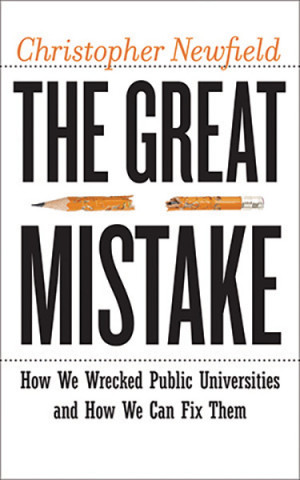 by Philip E. Lewis, Vice-President
by Philip E. Lewis, Vice-President
Andrew W. Mellon Foundation
Let me try to set the stage for discussion of our announced topic, the cost of program mergers and closings. I first considered the topic closings when, three years ago, the immediate past president of the Mellon Foundation, Don Randel, asked me whether we should consider a grantmaking initiative in support of such traditional fields as German, Italian and Russian studies or specifically in support of teaching the German, Italian and Russian languages. The question arose in the wake of the 2010 MLA report on enrollments, which discussed long-term trends in the study of foreign languages essential to scholarship in the humanities. However, the impetus behind Don Randel's question was more particularly the foundation's concern with retrenchment in colleges and universities that were reacting to the Great Recession of 2008. The MLA report on enrollments barely reflected the moves toward retrenchment, if it did so at all. However, we had previously had occasion to discuss a June 2009 article by Scott Jaschik in IHE about troubles in the field of German, and early in 2010 we were already hearing about cuts in Title VI support of international studies and foreign language programs that Congress was contemplating.
So the larger concern we proceeded to broach with people in various colleges and universities we work with was that the financial difficulties caused by the Great Recession of 2008 could have particularly severe effects on vulnerable academic programs or departments that were already plagued by relatively weak enrollments, a poor job market for Ph.D’s, sub-par resources for supporting a large corps of non-tenure-track language and writing instructors, and a great deal of facile public discourse about the need to connect undergraduate education to gainful employment. Over the next year or so, we came to the conclusion that it would not make sense to support those embattled traditional, commonly taught languages or other apparently imperiled humanities fields in the somewhat rarefied universe of institutions that Mellon serves. We undertook instead some discrete grantmaking related to areas studies and the less commonly taught languages.
Since that moment three years ago, two additional factors—one general and one particular—have come into play. The general one is obviously the interest in online educational opportunities that extend far beyond the domain of for-profit institutions that offer career-oriented degrees. The new online thrust, focused on the design of online courses eligible for credit in non-profit institutions, further loosens the once largely unquestioned hold of traditional in-classroom delivery of instruction. The particular one, which is perhaps unique to Mellon’s liberal arts colleges program, stems from institutions seeking to join in collaborative arrangements for the teaching of Arabic; they can only afford to do it consortially, but at least they are trying to do it in response to strong student demand. This latter trend points toward a related factor—an incidence of program-creation that is greater than that of program-closing—that needs to be included in the context we are considering.
All the factors I've noted--enrollment trends, the job market, the weak position of adjunct faculty, the shift of resources into professional programs, the growth of online instruction, and multi-institutional collaborations in Arabic language programs and often in Islamic Studies as well--contribute to a horizon toward which the topic of mergers and closings beckons, i.e., the effort pervading the whole of higher education to reduce costs by organizing the academic enterprise more efficiently or strategically.
Now, given the structures that prevail in the stratified, marketized system of higher education that we have, which do limit the room to maneuver of the responsible administrations, it is not surprising that closing departments and programs and forcing mergers are frequently considered managerial options. I believe it is fair to say that the data we have on closings and mergers that have actually occurred over the past several decades is thin and that analytic work on the phenomenon is sorely needed. But with that caveat in place, given that the closings and mergers reported over the past five years are relatively spectacular because they turn out not to be all that numerous, and given that administrations do not seem to be rushing at every turn to pursue them, one can reasonably ask why they have not been used more frequently.
At this juncture, the primary observation that I would make is that in classic institutions that would be in the upper quarter or third of the more than 4000 post-secondary institutions in the system, the most prominent effect of the department and program closings that have occurred in well established zones of their curricula has been to draw collective attention to the problems and risks we are facing. A closing or a merger typically results in serious intra-institutional discussions about what is at stake when operational changes are necessary and about how the integrity of an academic and scholarly mission can be preserved or undermined. So there have actually been benefits as well as costs, and one benefit of note has been the mobilization of programs at risk that need to renew and defend themselves. It’s not surprising that administrators hesitate to eliminate components of a curriculum and look for less visible means to make cuts.
Can we nonetheless imagine a scenario that has not yet occurred in which the numbers of closings and mergers that dilute programs would escalate? Could there be a really damaging shakedown that would spread across hundreds of institutions? Such a cataclysm seems far less likely to me than a rather more common phenomenon, less dramatic than outright program closings, that is also far more widespread and harder to study than the shuttering of programs.
The likelier scenario is what I would term shrinkage by attrition and reorganization, in which mergers--the folding of small departments or academic units into larger ones--would be a major device, but perhaps not the most significant one, which would be exemplified by the downsizing that occurs when faculty members retire and their positions are either eliminated or moved to another area of the academic enterprise. That process of resource reallocation is one that can occur with little fanfare. It is the natural result of the principle that allows the intra-institutional market, defined through the lenses of enrollment patterns or student demand, to dictate the ongoing reshaping of the academic structure (or perhaps one should say enterprise).
My guess, which stems from a sense of the history and structure of the system, but which the data worshipers in our world would correctly say is not yet well supported, is that the cost of this subtle, incremental diminution of support for the language and literature, for the liberal arts and humanities, for education as a broad intellectual project is far greater than that of the visible closings and mergers we have witnessed up to now. (A broad perspective that resonates with mine is offered by Russell Berman in “The Real Language Crisis," Academe (September-October 2011.) It is important for us to be talking about how we can recognize and combat that larger and more nebulous trend even as we try to draw the appropriate lessons from such closings and mergers as have occurred.




2 comments:
That's plenty of words. I have no doubt that grants would make universities think twice about destroying foreign language programs, but a better question is whether these belong at a university level at all. I've used Rosetta Stone to learn Spanish and they did a better job than my undergraduate courses staffed by grad students. It's a foolish waste of money to spend university tuition on something that can be taught easily online.
I'm sorry about your TA experiences. But countries that produce truly competent speakers of foreign languages invest years in a variety of types of face to face language instruction. Instructional technology can play an important support role, but no country that is serious about language competency is going to close its language departments and replace them with online courses.
Join the Conversation
Note: Firefox is occasionally incompatible with our comments section. We apologize for the inconvenience.